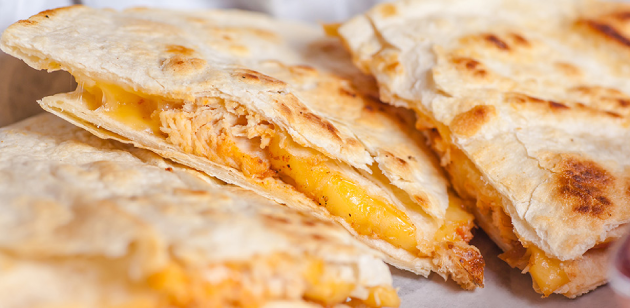
Global Cheese Trends
When it comes to food consumption in recent years, the familiar Disney refrain has proved true: “It’s a small world after all!”
Where cheese comes from is driving consumption, and bringing international varieties into the marketplace is a way to influence continued growth, according to Euromonitor (“Between Health and Indulgence: Unveiling Geographical Hotspots for Cheese Part I,” October 2018). American consumers have increased exposure to ethnic cuisines, experimenting with food and flavors, and expanding their taste preferences.
“The global cheese market has become smaller, more intimate, because consumers have been exposed to a wider variety of cheese from different countries with unique flavors, textures, and applications,” says Melissa Abbott, vice president for Hartman Retainer Services, the research division of the food consultancy The Hartman Group.
Originally, ethnic foods were hard to find outside of foodservice and family homes. Today, they are available in grocery stores and other retail channels due to increased consumer interest in international cuisine and ethnically inspired flavors. While Millennials may significantly influence the cheese category, Gen Z is driving many of the global flavor and ethnic food trends, according to Caroline Roux, food and drink research manager at Mintel. Bold, spicy flavors and foods from the Mediterranean, Middle East, Korea and Southeast Asia appeal to Gen Z consumers.
The aging of multicultural generations that were exposed to ethnic foods as children, the growth of the Hispanic population in America, and a burgeoning desire by more people to try new things have helped “make uncommon foods and flavors more available to consumers to try,” explains Eric Richard, industry relations coordinator for the International Dairy Deli Bakery Association (IDDBA).
Consumer Interest in Ethnic Cheeses Expands—Especially for Hispanic Varieties
Cheese is a mainstay on American menus, and it continues to appeal as both a standalone snack and as an added ingredient. While cheeses like mozzarella and cheddar are still favorites, Hispanic varieties are becoming more popular, according to IDDBA data. Consumers have become better acquainted with Hispanic cuisines and ingredients through various marketing channels. This exposure has driven tremendous growth for Hispanic cheeses such as Queso Fresco, Cotija and Oaxaca, which all bring different attributes to cooking.
“More consumers are eating global cheeses as a part of their daily diets, and cheese as an ingredient is popping up in products more often,” Abbott continues. “Hispanic varieties, like Manchego from Spain or Haloumi and feta from the Mediterranean regions, are moving into the mainstream.”
Cheese infused with Mediterranean or Middle Eastern spices and curries are catching on with consumers. Also trending are hotter flavor formats created with various peppers used in conventional Hispanic cooking, including jalapeno, habanero, chipotle and ghost peppers.
Today’s consumers want to know how their food is made, where it comes from, and how they can create an exciting food experience. Cheese producers, manufacturers and retailers must be perceived as sources of this information, whether in-store, social media or websites, according to IDDBA data.
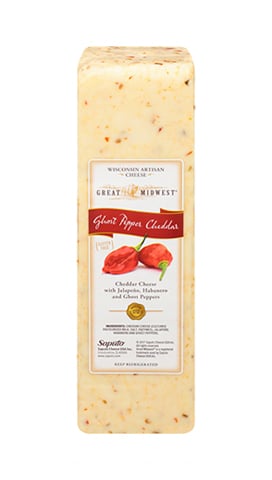
Social media channels encourage consumers to actively participate and try global cuisines. Retailers have leveraged this consumer interest, introducing them to unique global cheeses, according to Hartman Group qualitative insights and quantitative data. Smaller portions and packaging encourage experimentation and lower the risk of trying new cheese products.
Retailers like Trader Joe’s “have changed the way consumers engage with cheese, offering tastings and extensive cheese counters,” Abbott says. “They are guiding consumers on the cheese journey by providing products in multiple applications and flavor varieties.”
Cheese producers may leverage the ‘experiential’ dining trend by partnering with manufacturers and other industries to create unique eating occasions that engage consumers. For example, in-store tastings or festivals allow consumers to sample new products and learn about serving suggestions and complementary pairings with wine, nuts, bread or fruit.
“Consumers want to create experiences for their families and friends. They are curious about unique appetizers and meal combinations to bring home,” Richard says. “Cheese is perfect for endless innovation in fresh and commercial fresh or frozen baked goods, resulting in constant excitement in the marketplace.
"Food television shows also deserve credit for elevating consumer awareness of cheese pairings, flavor combinations, and unconventional applications. They also have driven new culinary concepts, innovation and product usage throughout the cheese industry. “Consumers watch food television as a sport,” Abbott explains. “They are educated about foods, which translate into their shopping habits and preferences.”
While international cuisines certainly influence consumption of global cheeses, the primary driver isn’t cuisine specific. Hartman Group research indicates that innovation is driven more by authenticity, transparency and quality fat. In the past, consumers believed that eliminating fat, avoiding certain ingredients and changing their preparation methods were the best way to achieve good health. But that is no longer the case. “Today’s consumers are willing to choose more indulgent foods if they are perceived as premium, traditional, artisanal, locally sourced and authentic,” Abbott says. “These trends create opportunities in the cheese space.”
The craft of cheesemaking is one such opportunity. “There is a storytelling component to cheese,” Richard notes. “From what part of the world it originates to where the cows or goats are raised … the whole story from farm to cheese case or aisle is quite compelling.”
Global Cheese and Internationally Inspired Flavors Moving Mainstream
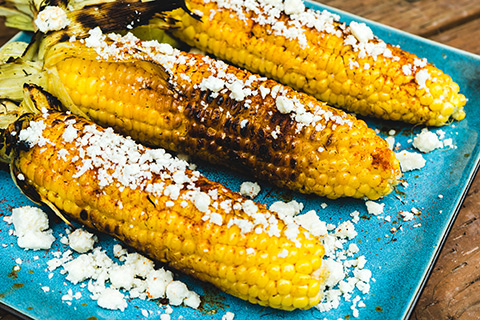 Premiumization can serve as a way to promote global products and flavors. The Hartman Group research finds that distinct flavors, sourcing and price effect consumer preference for cheese. Innovation that incorporates bold, ethnic flavors and features the ‘cheese story’ on product labels lends a uniquely, authentic quality to more mainstream products. Premium cheese products that can be labeled as craft, small batch, exclusive and internationally inspired create an appeal to consumers.
Premiumization can serve as a way to promote global products and flavors. The Hartman Group research finds that distinct flavors, sourcing and price effect consumer preference for cheese. Innovation that incorporates bold, ethnic flavors and features the ‘cheese story’ on product labels lends a uniquely, authentic quality to more mainstream products. Premium cheese products that can be labeled as craft, small batch, exclusive and internationally inspired create an appeal to consumers.
“Producing and marketing a quality or premium cheese or ingredient is appealing to consumers, and infusing distinctive flavors creates excitement, elevating the food experience,” Abbott says.
Making international flavors more accessible to the average consumer is stock and trade for Trader Joe's, which recently began selling kunefe. The Middle Eastern dessert features outer crusts made of kataïfi (shredded phyllo dough) and an interior blend of mozzarella and mizithra, a ricotta-like cheese made from sheep or goat milk.
Globally inspired cheeses are finding their way into more mainstream snacks as well. “The proliferation of snacking and endless snack occasions creates additional opportunities for new food pairings and cross-merchandising offered in stores and other channels,” Richard explains.
CCD Innovation’s new product database confirms that cheese producers and snack companies are innovating with new formats and tapping into on-trend flavors that appeal to consumer preferences for bold, unique tastes. Carr Valley Cheese, for example, has created individually packed cheese bread sticks inspired by a Finnish recipe that can be eaten warm. Cheese Fusions from Norseland has played with formats, creating little cheese bites infused with Hispanic flavors, such as Fiery Habanero and Smoked Chipotle Cheddar. And Borden Cheese introduced Habanero Cheddar Mozzarella string cheese.
Saputo Cheese USA Inc. leveraged consumer interest in bold tastes with the recent launch of its Stella Rubbed Fontinella Wedges. The creamy cheese is hand-rubbed to create four unique flavor combinations, Basil Pesto, Harrissa, Bourbonista™, and Black Pepper.
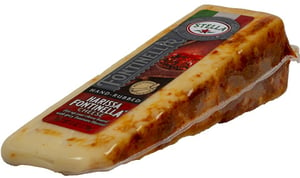 Refrigerated dips, meanwhile posted significant growth for the 52 weeks ending June 16, 2019, according to IRI’s quarterly sales report of the U.S. snacking market. Cream cheese-based dips and spreads with on-trend flavors in particular flourished. Kraft Heinz recently launched new Philadelphia-branded dips leveraging the popularity of Hispanic-inspired flavors, including Jalapeño Cheddar and Southwest-Style with black beans and corn.
Refrigerated dips, meanwhile posted significant growth for the 52 weeks ending June 16, 2019, according to IRI’s quarterly sales report of the U.S. snacking market. Cream cheese-based dips and spreads with on-trend flavors in particular flourished. Kraft Heinz recently launched new Philadelphia-branded dips leveraging the popularity of Hispanic-inspired flavors, including Jalapeño Cheddar and Southwest-Style with black beans and corn.
Convenience and Product Variety Create Opportunity
Consumers are not cooking as often, and if they do, they make partially homemade meals combining take-home fresh, frozen and refrigerated foods to embellish them. This trend creates a great space for producers to innovate cheese and cheese products, like appetizers, sides, and desserts, according to Hartman data.
Producers and manufacturers are infusing global flavors, such as Hot Ghost Pepper, Jalapeño, and Habanero, into cheese products consumers use daily. Offered in multiple formats, these flavors elevate the taste experience of traditional foods like nachos and hamburgers. Middle Eastern- and Mediterranean-spiced cheeses with sundried tomatoes and kalamata olives lend international distinction to paninis and pizzas.
Saputo’s Great Midwest® brands took the classic taste of aged Cheddar and blended in favorite flavors, like fiery, hot ghost peppers, creating a uniquely different, artisanal cheese. The Great Midwest® jalapeño and habanero Monterey Jack cheeses turn up the heat in any dish. And visit the Greek Islands without leaving home, by slicing into the Great Midwest® Mediterranean Cheddar cheese, featuring a combination of sun-dried tomatoes, Kalamata olives and a spice blend. These ethnically-flavored cheeses create a distinctive eating experience for consumers.
Cheese products only remain relevant if new varieties and flavors are continuously introduced. Globally inspired cheeses and flavor profiles create excitement by infusing distinctly different, ethnic tastes into more familiar products.
From Unknown to Uniquely Familiar: Inside the Cheese Journey
Consumers seek variety, and they are looking beyond traditional offerings. Products featuring globally inspired food and ethnic flavors are especially appealing to those consumers who crave something unconventional.
“As Americans become more acquainted with global cheese on a regular basis, [these lesser known varieties] will become more familiar,” says Eric Richard, industry relations coordinator for the International Dairy Deli Bakery Association (IDDBA). “Gradual incorporation of globally inspired flavors, especially those Hispanic cheeses that are already moving into mainstream cooking, can grow consumer preference for new products made with these types of cheese.”
Education is key to making global cheeses more familiar. Certain cheeses are better suited to stand alone rather than being incorporated into a product. Helping consumers understand the value of using one cheese over another in different ways entices them to try different combinations and products on their own.
Targeted messaging and labeling can help manufacturers and retailers better connect with consumers, according to IDDBA data. Including an ethnic cheese’s story on the packaging engages and educates curious consumers. Sampling of global cheeses and products with ethnic flavors also widens exposure and establishes brand awareness.
Global cheeses are often included in products to appeal to those looking for a more gourmet, culinary experience. Commercial fresh and frozen products (including appetizers, breads, pizzas, pastas and desserts) play into the consumer desire for fresh, premium foods made from high-quality, authentic ingredients.
Incorporating global cheeses in adult or even kids’ snack trays could be an area of growth for producers. Kids today are exposed to multicultural cuisines and flavors at a much earlier age. “Younger generations of consumers are an evolving customer base, and they will be looking for authentic products with global cheeses and ethnic flavors that deliver an amazing experience,” Richard says. “But it takes time. Exposure. Familiar. Mainstream. That’s the journey.”
Breakfast Anyone? The Morning Meal Creates New Prospects for Cheese
Eating occasions are constantly evolving, and cheese producers and manufacturers must evolve with them. Hartman Group qualitative insights and quantitative data show that health-conscious consumers seek functional and tasty food options throughout the day. Cheese products are a mindful snacking option—even at breakfast.
“Research shows that most consumers tend to eat cheese as a snack—typically from noontime on,” says Melissa Abbott, vice president for Hartman Retainer Services. “More recently, morning occasions for cheese and cheese product consumption have increased, especially among Millennials who prefer savory foods and are not as concerned about fat.”
Consumers also are recognizing the value and convenience of frozen foods for every meal occasion. Sales of frozen breakfast meals rose 8.3 percent and breakfast sandwiches increased 3.9 percent in 2018, the National Frozen & Refrigerated Foods Association reports.
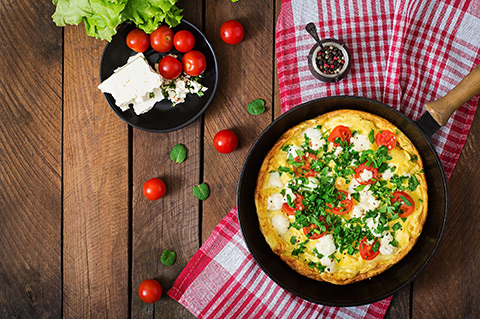 Influenced by Hispanic cuisines, breakfast sandwich makers have evolved their offerings to also include breakfast tacos or burritos. Breakfast bowls are becoming popular as well, in part because they can be made with globally inspired ingredients from Hispanic and Asian cuisine, according to Packaged Facts’ “Bundle: Breakfast Trends and Opportunities” reports. “Race and ethnicity emerge as distinguishing characteristics in breakfast usage and habits," David Sprinkle, research director for Packaged Facts, said upon the reports’ release.
Influenced by Hispanic cuisines, breakfast sandwich makers have evolved their offerings to also include breakfast tacos or burritos. Breakfast bowls are becoming popular as well, in part because they can be made with globally inspired ingredients from Hispanic and Asian cuisine, according to Packaged Facts’ “Bundle: Breakfast Trends and Opportunities” reports. “Race and ethnicity emerge as distinguishing characteristics in breakfast usage and habits," David Sprinkle, research director for Packaged Facts, said upon the reports’ release.
Food manufacturers also are serving up spicy breakfast options with health claims touting their organic or high protein composition. For example, Good Food Made Simple offers breakfast burritos made with cheeses ranging from cheddar and Monterey Jack to feta. Breakfast bowls, enchiladas and flatbread sandwiches also offer portable meals in multiple flavors and formats.
Subscribe to our blog
Posts by Topic
- CPG Manufacturer (12)
- Retail (12)
- Global (9)
- Packaging (8)
- cheddar cheese (8)
- Blue Cheese (6)
- Transparency (6)
- Consumer Trends & Insights (5)
- Feta Cheese (5)
- Frozen (5)
- Lunch (5)
- National (5)
- Research & Development (5)
- Snack (5)
- parmesan cheese (5)
- protein (5)
- Better-for-You (4)
- Cheese Cubes (4)
- Clean/Free-From (4)
- Condiments (4)
- Dinner (4)
- Gen Z (4)
- Goat Cheese (Chèvre) (4)
- Herbs & Spices (4)
- Keto (4)
- Milk (4)
- Millennials (4)
- Peppers (4)
- Ricotta Cheese (4)
- hard cheese (4)
- Blend (3)
- Breakfast (3)
- Consumer (3)
- Convenience (3)
- Desserts (3)
- Dips & Sauces (3)
- Food & Beverage Trends & Insights (3)
- Fresh Mozzarella Cheese (3)
- Fruit (3)
- Gen X (3)
- Great Midwest (3)
- Health & Wellness Trends & Insights (3)
- Ingredients (3)
- Meal Kit (3)
- Montchevre (3)
- Mozzarella Cheese (3)
- Nutrition (3)
- Pizza (3)
- Retail Trends & Insights (3)
- Salt (3)
- Snacks (3)
- Social Media (3)
- Specialty Cheese (3)
- Spirits (3)
- Stella (3)
- String Cheese (3)
- Supply Chain (3)
- Varieties (3)
- Wine (3)
- vegetables (3)
- American Cheese Society (2)
- Applications (2)
- Asiago Cheese (2)
- Baby Boomers (2)
- Beer (2)
- COVID-19 (2)
- Flavors & Ingredients Trends & Insights (2)
- Fontinella Cheese (2)
- Generational Marketing (2)
- Grab-and-Go (2)
- Main Dishes (2)
- Mobile (2)
- Organic (2)
- Organic & Non-GMO (2)
- Pairings (2)
- Premium Mozzarella Cheese (2)
- Salemville (2)
- Silent Generation (2)
- Soft & Fresh Cheese (2)
- Spreadable Cheese (2)
- Toppers (2)
- Vegan & Vegetarian (2)
- Vegetarian (2)
- goat’s milk (2)
- marketing & communications (2)
- process (2)
- romano cheese (2)
- sheep’s milk (2)
- traditional mozzarella cheese (2)
- All-Natural (1)
- Artisan Cheese (1)
- Beverages (1)
- Black Creek (1)
- Breads (1)
- Brie Cheese (1)
- Certification & Education (1)
- Certified Cheese Professional (CCP) (1)
- Chain (1)
- Cheese Crumbles (1)
- Cheese Sticks (1)
- Cheesemakers (1)
- Cheesemonger (1)
- Clean (1)
- Colby Cheese (1)
- Cost Management (1)
- Craft (1)
- Cream (1)
- Cultures (1)
- Customer Experience (1)
- Deli (1)
- Delivery (1)
- Facilities Management (1)
- Farmstead Cheese (1)
- Flexitarian (1)
- Food Quality & Safety (1)
- Fresh Asiago Cheese (1)
- Frigo (1)
- Gorgonzola Cheese (1)
- Gouda Cheese (1)
- Heavy Cream (1)
- History (1)
- Ice Cream Mix (1)
- Iced Coffee (1)
- Independent (1)
- Insider (1)
- Joan of Arc (1)
- Leadership (1)
- Mold (1)
- Monterey Jack Cheese (1)
- Mozzarella Cheese Blend (1)
- On-the-Go (1)
- Operations (1)
- Packaging Trends & Insights (1)
- Pasta (1)
- Pasteurization (1)
- Pepper Jack Cheese (1)
- Pizzaiolo (1)
- Pizzeria (1)
- Plant-Based (1)
- Plant-Based and Plant-Forward (1)
- Processed (1)
- Recipes (1)
- Recruitment & Retention (1)
- Regional (1)
- Rennet (1)
- Salads & Soups (1)
- Sales & Profitability (1)
- Smoked (1)
- Snacking Trends & Insights (1)
- Success Stories (1)
- Sustainability & Responsible Sourcing (1)
- Swiss Cheese (1)
- Takeout (1)
- Techniques (1)
- Technology (1)
- Treasure Cave (1)
- Vegan (1)
- Whipped Topping (1)
- Whipping Cream (1)
- manufacturer (1)
- merchandising (1)
- pecorino romano cheese (1)
- plant-based & plant-forward (1)
